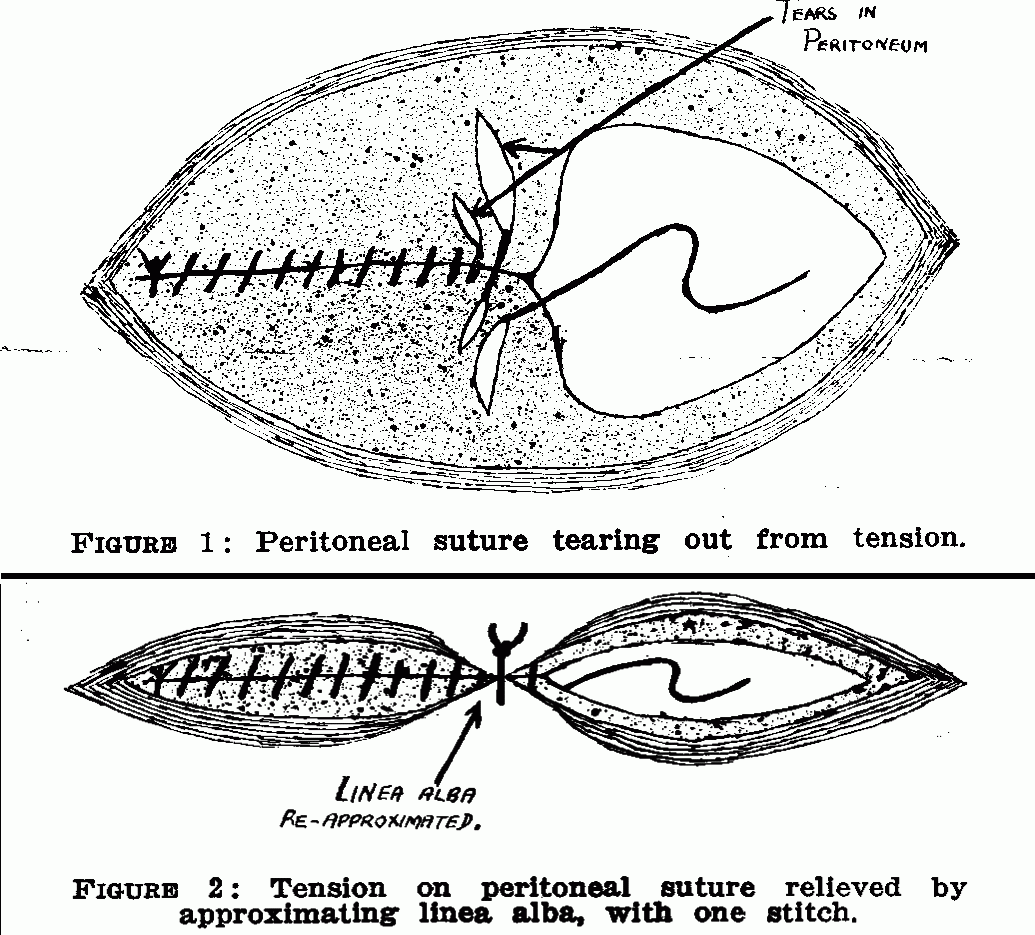SIR: Peritoneal sutures in an upper mid-line incision sometimes cut. out, even in a relaxed patient, because of obesity or frail tissue. In former days of ether anzesthesia several solutions for this problem were worked out, such as special double-jawed clamps, using many pairs of artery forceps so that their weight brought the edges closer, suturing parallel to the wound, or taking big distant bites to include tougher tissue under the peritoneum.
A much simpler method, when tearing out of the peritoneal suture threatens, is merely to put a single stitch in. the linea alba just over the second-last peritoneal suture. When the two edges of the linea alba are pulled together, most of the tension is taken off the deeper layer, which is now unlikely to tear out (Figures 1 and 2).

FIGURE 1: Peritoneal suture tearing out from tension.
FIGURE 2: Tension on peritoneal suture relieved by approximating linea alba, with one stitch.
Some surgeons now do not bother stitching the peritoneal layer, with,, apparently good results, but for' those who still do, this technique may save time, tissue and temper.
A technique as simple as this is unlikely to be original, but I have
found no published account of it. This very simplicity may well have put
others off describing a most. helpful operative manoeuvre.
-o0o-
Tearing out of peritoneal suture
Michael Patkin
Department of Surgery,
Royal Newcastle Hospital,
Newcastle, N.S.W. 2300.
_______________________________
Tension in suturing is frowned on, for good reason. Sutures will compress and strangulate tissue, cutting off blood supply essential for healing. and may tear out at the time or later.
However sometimes it can't be avoided. Here is one technique to allow suture of the peritoneum by relieving tension on it.
Surgeons vary greatly as to how much tissue tension they will accept on suture lines.
Another way of doing this was described yers ago by Spivack, an American surgeon. He put heavy clamps on the fascial edges so their weight would drag them together.
Of course whether peritoneum needs suturing at all is also open to question.
Two other methods of decreasing or eliminating tension are
1. the use of relieving incisions, like
a: the Tanner slide in inguinal hernia repair, and
b . my method (maybe described before by others) of putting relieving
incisions in the anterior rectus sheath in the repair of abdominal incisional
hernias.
2. The use of prosthetic materials such as Goretex to span tissue deficiencies.